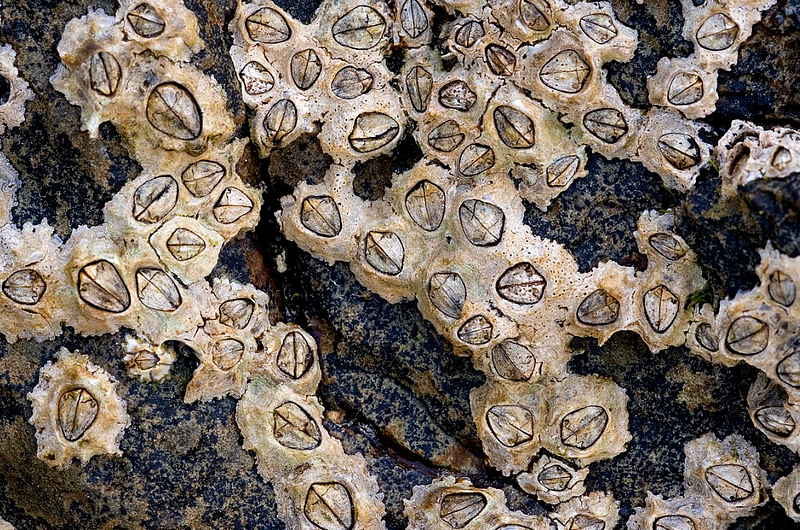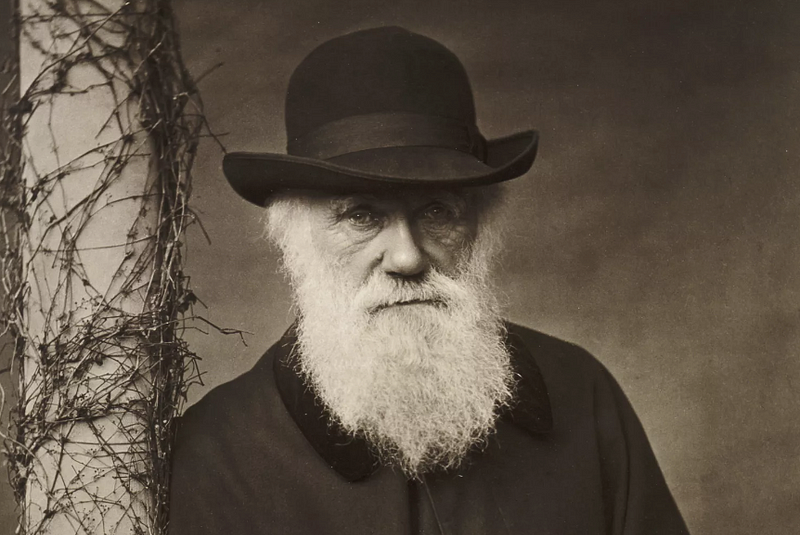The Surprising Impact of Barnacles on Darwin's Theories
Written on
Chapter 1: The Enigmatic Barnacle
Barnacles play a surprisingly crucial role in the annals of natural science. For over a century, these marine organisms perplexed some of the most esteemed biologists, challenging their perceptions of the natural world. Among these scholars was Charles Darwin, who dedicated an extensive period—nearly a decade—to the study of barnacles. This endeavor became a pivotal part of his scientific journey, providing insights that transcended the mere biology of barnacles.

A Mysterious Origin
Barnacles have been a staple of marine ecosystems, often found clinging to diverse surfaces, from rocky coastlines to the undersides of boats, and even on the skin of large marine creatures like whales and turtles. These small, hard-shelled beings are scientifically categorized as Cirripedes, boasting a rich diversity with over 1,000 species inhabiting waters globally.
Their life cycle begins as free-swimming larvae, a critical phase that later aids in comprehending their biological identity. Once they mature, barnacles attach themselves to a surface for the rest of their existence. They feed by extending feather-like appendages to capture plankton, classifying them as filter feeders. Initially, their sedentary lifestyle and hard, calcified shells led scientists to mistakenly associate them with mollusks, such as clams and oysters, which share superficial characteristics.
Barnacles first appeared in the fossil record approximately 320 to 330 million years ago, marking their long-standing presence throughout geological history. This extensive timeline is documented by over 400 extinct species, primarily known through fossilized remains. Despite this rich history, the true nature of barnacles remained elusive for centuries, presenting a significant challenge in understanding evolutionary relationships among marine organisms.
The conundrum posed by barnacles stemmed from their deceptive simplicity. At first glance, they appeared to be mere shell-enclosed organisms fixed to a surface. However, beneath this veneer lay a complex biological enigma that intersected with essential questions of biology and taxonomy.
Darwin’s Crusade Against Barnacles
Charles Darwin, celebrated for his foundational contributions to evolutionary theory, became engrossed in an exhaustive study of barnacles that extended nearly a decade. Initially, he might have perceived this research as a minor detour—an effort to enhance his scientific reputation while he developed his broader theories. However, his commitment to barnacles evolved into a formidable undertaking that lasted far longer than he had anticipated.
Darwin's fascination with barnacles ignited during his voyage aboard the HMS Beagle, where he encountered various species that captivated his interest. The ongoing debate regarding their classification fueled his decision to delve deeper into their study.

At the time, barnacles were a subject of heated scientific debate, with their true nature baffling many esteemed naturalists. Darwin recognized an opportunity to clarify this confusion while simultaneously refining his thoughts on natural selection and evolutionary relationships.
His task was daunting. Darwin immersed himself in a meticulous examination of both living and fossilized barnacle specimens, necessitating extensive dissection and detailed description. His correspondence from this period reveals the toll this study took on him; he expressed both frustration and fatigue, famously remarking to a friend, “I hate a Barnacle as no man ever did before,” underscoring his exasperation.
Despite these challenges, Darwin's work on barnacles yielded pivotal insights, establishing him as a leading authority on the subject and enhancing the understanding of their diversity and biology.
The Taxonomic Puzzle
The classification of barnacles has long posed a complex puzzle for naturalists, contributing to a rich history of scientific inquiry. Initially categorized alongside mollusks by Carl Linnaeus in the mid-18th century due to their hard shells and sedentary lifestyle, this classification reflected the limited knowledge of marine biology at the time.
However, as understanding of marine organisms progressed, this initial classification was scrutinized. Notably, Georges Cuvier, a prominent French naturalist, examined barnacles and, while recognizing certain similarities with arthropods, ultimately retained them within the mollusk category in his influential works published in the early 19th century.
A turning point in the taxonomic classification of barnacles occurred in the 1830s, thanks to British naturalist William Thompson. He noted the free-swimming larval stage of barnacles, which closely resembled the larval forms of crustaceans. This observation led him to propose that barnacles belonged to the crustacean group, dramatically altering their taxonomic status.
Thompson's proposition represented a significant shift in understanding, moving barnacles from the mollusk classification to that of crustaceans. This reclassification fundamentally challenged previous assumptions about barnacles' nature and their position in the animal kingdom.
Darwin's subsequent research provided the rigorous analysis necessary to validate Thompson's hypothesis. His comprehensive study not only supported the reclassification but also deepened the understanding of barnacles' evolutionary history and biological diversity.
A Window to Evolution
Through his extensive examination, Darwin uncovered a remarkable range of variation within barnacle species. This observed diversity became concrete evidence for the principles of natural selection. The evolution from a free-swimming larval phase to a sedentary adult life presented a unique opportunity to explore developmental processes and evolutionary adaptations.
Moreover, the reclassification of barnacles highlighted the importance of phylogenetic relationships in understanding evolutionary history. Darwin’s barnacle research allowed him to apply and validate his emerging ideas about natural selection, demonstrating that even slight advantages in specific traits could significantly enhance survival, thus favoring the reproduction of individuals with those traits.
This hands-on study reinforced the notion that variation within species is a fundamental component of evolutionary change. Additionally, Darwin's barnacle research exemplified the scientific method's rigor, showcasing the importance of thorough investigation in the quest for knowledge.
From Confusion to Clarity
The journey from the initial confusion surrounding barnacle classification to a clearer understanding of their role in the natural world illustrates the evolving nature of scientific discovery. The resolution of the barnacle classification dilemma marked a notable advancement in biology, illuminating the evolutionary pathways among marine organisms.
The reclassification of barnacles from mollusks to crustaceans reflects a deeper understanding of evolutionary biology, made possible through meticulous observation and comparative anatomy. The groundwork laid by early naturalists such as Linnaeus and Cuvier, despite their initial misclassifications, facilitated this progression.
Furthermore, modern studies employing genetic and molecular techniques continue to refine our understanding of barnacles and their evolutionary narrative. Genetic research has uncovered instances of convergent evolution between barnacles and certain mollusks, clarifying some of the early misconceptions surrounding their classification. These findings underscore the complexity of evolutionary processes and the intricate patterns of similarity and divergence that have transpired over millions of years.
The video, "These Creatures Were Darwin's Greatest Enemy," delves into how barnacles challenged Darwin's understanding of evolution and their significant impact on biological science.